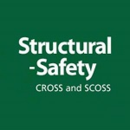Structures at the end of their design life
Design life varies according to the type and use of a structure. A structure should retain fitness for purpose as it approaches and passes its design life or changes use.
Much of our small scale built environment was developed without a defined service life. The structure, services and finishes are likely to have been upgraded progressively without disproportionate cost and with limited regulation.
For major public infrastructure and industrial/commercial structures a design life will have been specified in the design brief but changes in loading and use will have often required upgrades long before the design life has been reached. Bridges in particular have an inspection and assessment process in order to evaluate ongoing serviceability. For essential public infrastructure the consequence of closures for replacement is such that life extension, strengthening and upgrade whilst remaining in service may have to take place.
For industrial structures the economic life of the system of which the structure is a part is usually governed by the M&E equipment and the commercial viability of the production system or the resource being exploited.
For many commercial structures the structure itself is likely to have a longer economically viable life than the commercial application. M&E equipment upgrade requirements, changes in technology and changes in use can limit the economic life of a structure. The presence of hazardous materials may limit the economic viability of modifications to older low value structures to meet new commercial needs.
In pure structural terms life extension is greatly facilitated if the structure is accessible for inspection and repair and the design and fabrication information is readily available. BIM will be valuable for future life extension of new structures.
Whilst the focus in structural assessments is on the primary components of a structure consideration of secondary elements such as cladding panels and facades is also necessary because they may fail due to corrosion of fixings and decay of masonry.
Internationally, there is a need for greater awareness and regulation in some countries as there have been many structure failures arising from combinations of poor construction and maintenance and additions beyond the capability of the original structure and foundation.
We need to avoid the largely unnecessary cost and effort associated with calling for design life assessments for all structures. Major structures with inspection and maintenance programmes and those actively managed and maintained are already largely satisfactorily addressed, but would be helped by more design attention to inspection and maintenance. Industrial structures often have a short life but changes in use may not be fully covered. Domestic structures do not need it. Perhaps small scale commercial structures do.
This topic paper was issued by SCOSS in June 2015. You can view the original here.
[edit] Related articles on Designing Buildings Wiki
- Concept structural design of buildings.
- Cradle-to-grave.
- Deflection.
- De la Concorde overpass collapse.
- Decommissioning.
- Demolition.
- Design for deconstruction.
- Design life.
- Design quality for buildings.
- Detailed structural design.
- Dismantling.
- Elements of structure in buildings.
- FC Twente stadium roof collapse.
- Fitness for purpose.
- Major cast metal components.
- Span.
- Structural engineer.
- Structural steelwork.
- Structural vibration.
- Structure definition.
- The development of structural membranes.
- Urban decay.
Featured articles and news
The benefits of engaging with insulation manufacturers
When considering ground floor constructions.
Lighting Industry endorses Blueprint for Electrification
The Lighting Industry Association fully supports the ECA Blueprint as a timely, urgent call to action.
BSRIA Sentinel Clerk of Works Training Case Study
Strengthening expertise to enhance service delivery with integrated cutting-edge industry knowledge.
Impact report from the Supply Chain Sustainability School
Free sustainability skills, training and support delivered to thousands of UK companies to help cut carbon.
The Building Safety Forum at the Installershow 2025
With speakers confirmed for 24 June as part of Building Safety Week.
The UK’s largest air pollution campaign.
Future Homes Standard, now includes solar, but what else?
Will the new standard, due to in the Autumn, go far enough in terms of performance ?
BSRIA Briefing: Cleaner Air, Better tomorrow
A look back at issues relating to inside and outside air quality, discussed during the BSRIA briefing in 2023.
Restoring Abbotsford's hothouse
Bringing the writer Walter Scott's garden to life.
Reflections on the spending review with CIAT.
Retired firefighter cycles world to raise Grenfell funds
Leaving on 14 June 2025 Stephen will raise money for youth and schools through the Grenfell Foundation.
Key points for construction at a glance with industry reactions.
Functionality, visibility and sustainability
The simpler approach to specification.
Architects, architecture, buildings, and inspiration in film
The close ties between makers and the movies, with our long list of suggested viewing.
SELECT three-point plan for action issued to MSPs
Call for Scottish regulation, green skills and recognition of electrotechnical industry as part of a manifesto for Scottish Parliamentary elections.
UCEM becomes the University of the Built Environment
Major milestone in its 106-year history, follows recent merger with London School of Architecture (LSE).
Professional practical experience for Architects in training
The long process to transform the nature of education and professional practical experience in the Architecture profession following recent reports.























